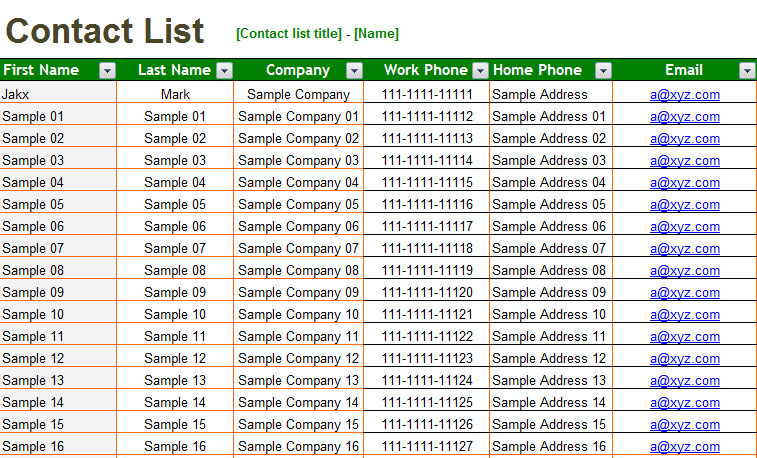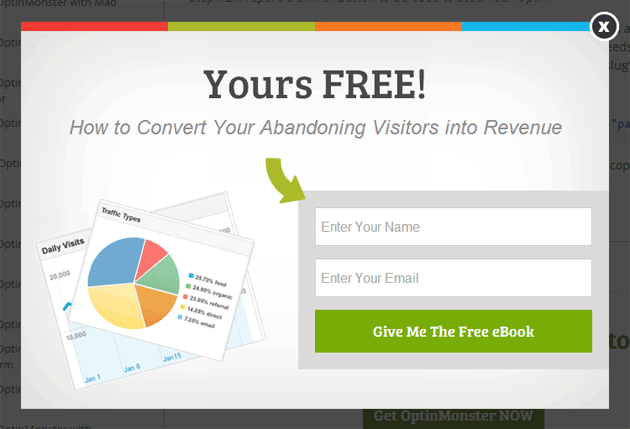Despite a widely circulating opinion that social media is the king of the contemporary digital communication, the statistics keeps showing that just email outperforms any other communication channel exponentially. Since the average email open rate comes to 30%, the visibility of the content delivered by emails performs much better in comparison with Facebook and Twitter, for example. Thus, it would be absolutely legitimate to claim that email is remaining the most lucrative sales channel today.

Contact Lists Define the Future of Email Campaigns
The professional email marketers know well from which point any efficient email campaign starts – from the thoroughly created email lists. The substantial cause of either a successful promotion or a sorrowful failure is hidden deeply in the very process of how the email lists are built. In order to engage subscribers as well as to avoid violating an anti-spam legislation, a certain amount of efforts is required from the email marketers when they are getting down to the creation of their email lists. We do not promise any quick-fix solution here, but the piece of knowledge derived from the broad practical experience of the advanced bulk sending platform SendPulse is worth considering in any case.
Choosing Between Two Basic Approaches
When it comes to the fruitful relationships with customers, email plays really well whatever stage of the customer engagement it implies. However, the only weak point taking place in every customer-related workflow is the initial introduction when a brand is absolutely unknown for the customers. Getting a new campaign started, the email marketers should prepare their contact lists first. This is a certain challenge since two different approaches can be applied to this issue. The first one implies buying contact databases from a third-party entity. Another one encourages the creation of an original self-made email list. Which approach is better to choose?
Contact Databases for Sale

Purchasing email contacts from outside is the easiest way ever to get access to the huge customer databases. At the same time, this approach entails many various risks among which shutting down your email account by the ESPs due to numerous subsequent spam reports is the most severe one. In addition to the purely operational problems such a situation delivers, a business would have to pay quite a significant penalty once an anti-spam legislation is violated. And the worst consequence of such a behavior is the ruined reputation of a brand in the eyes of consumers. Hence, each time when the email marketers are offered the third-party contact lists for purchase, the possible negative consequences of such an approach should be taken into thorough consideration.
Original Solution Works Better
In contrast to the quick and risky method of buying contact bases from outside, the creation of a “customized” email list is strongly recommended. Requiring quite a significant amount of time and efforts from the marketers this approach represents certain advantages, nevertheless. Since the highly-relevant content meets the customer expectations best, the clear understanding of who is who in your customer list is crucial for every email marketer. Each dedicated place such as a website or an e-shop where customers give the marketers their permission to use their email addresses for further communication is the most reliable source of the customers’ data. Thus, collecting data from those who really want to hear from you is the key methodology of making the subsequent customer engagement effective. Besides, the personalization of emails which brings a record ROI to brands is possible only when the email marketers create their customer lists on their own.
Distinguish Customers According to Business Goals
Before collecting customers into a list, all email marketers should ask themselves a very important question: how well do the collected individuals go in line with the main objective the list is aimed at? In other words, the email marketers should clearly understand whether a particular customer audience is relevant to the ongoing email campaign or not. When the list implies containing several hundreds or even thousands of customers, it is highly unlikely that all of them can equally comply with a single particular goal of the email campaign. Indeed, different campaigns imply achieving different goals such as, for example, the following:
- improving brand awareness;
- enforcing customers’ trust;
- educating users;
- representing discounts;
- reminding about some events;
- welcoming new customers, etc.
In order to optimize the process of creation of the customized email lists, a differentiated treatment for the customer audience is recommended. Thus, the multiple email lists facilitate the effective customer segmentation at the very initial stage of every email campaign.
Essential Data to Be Collected
The opt-in procedure is considered one of the simplest ways of collecting personal data from the customers. It is essential for the email marketers to be able to create the opt-in forms both sufficient with regard to the collected information and unobtrusive without redundant fields. Hence, the task is to make the subscription as simple as possible for users without compromising its informative capabilities for the marketers at the same time. In most cases, the following three main fields should be preferably available in an opt-in form:
- Email Address. From the mere technical viewpoint, this field should be created in such a manner that an incorrect filling-in could be impossible. For example, such a part as “@domainname” must be obligatorily indicated;
- Customer’s Name. This field is highly desirable in the case when the email campaigns imply personalization. Even though this field is not absolutely binding, many advanced marketers suggest addressing customers by name;
- Opt-in Checkbox. This field legitimates using the contact data of the subscribers for further communication via email. Although the majority of the email marketing platforms provide the “signed up on … website” note in the footer of their email templates, the checkbox standing “I’d like to receive emails from …” wouldn’t hurt.
Eye-Catching Forms Make Opt-in Easier

Having an attractive and simple opt-in form is only half the battle. The potential subscribers should come across the form somehow. And the method they do it can determine whether they sign up for your emails or not. It is important not to overdo in prettifying the opt-in forms with visuals. The simpler the better principle relates to this issue in the best way. A single field requiring just an email address delivers the best results, how odd it may sound. Colors, fonts, field size, and the placement of an opt-in form on the screen all should pass through A/B testing. The maximum visibility implies a place on a page where an opt-in form is spotted by the eyes easily. The pop-up forms are considered more effective in catching the attention of the website visitors. However, a certain restraint is required from the email marketers with regard to the pop-up forms since they attract many random visitors who can hardly be highly engaged. A lot depends on a particular architecture of a given website when the most eye-catching placement of an opt-in form is selected. After all, the final objective comes to the integration of an opt-in form into a web page in such a manner that nobody could skip the form occasionally.
Find a Strong Motivational Anchor
The last but not least subject to attracting customers to the email conversation with you is the very reason why they should opt-in for your newsletters. Probably this issue constitutes the hardest challenge for the email marketers’ creativity. “Learn more about us” sounds too trivial to make the customers represent their mailboxes for the messages whose relevancy remains questionable for them. At this stage, the professional sales managers should be involved in figuring out the encouraging appeals capable of incentivizing the visitors to become your subscribers. Consider first why the customers visit your website. Then try to imagine what problems they are trying to resolve in doing so. And after that invent the most motivational call to action touching the emotions of your customers.
Conclusion
Email will undoubtedly remain the most lucrative sales channel among all digital means of communication for very long. Preparing each email campaign, the marketers should begin with the thorough development of their contact lists. The originally created email lists are much more effective and reliable than the customer databases purchased from outside. The initial segmentation of recipients for multiple email lists in accordance with various marketing goals can significantly facilitate personalization of the subsequent email campaigns. The opt-in forms driving the subscribers to the email lists should be created in the easy-to-use and highly visible designs. The present useful suggestions based on a broad practical experience of such professional bulk sending platforms as SendPulse are recommended to take into account.